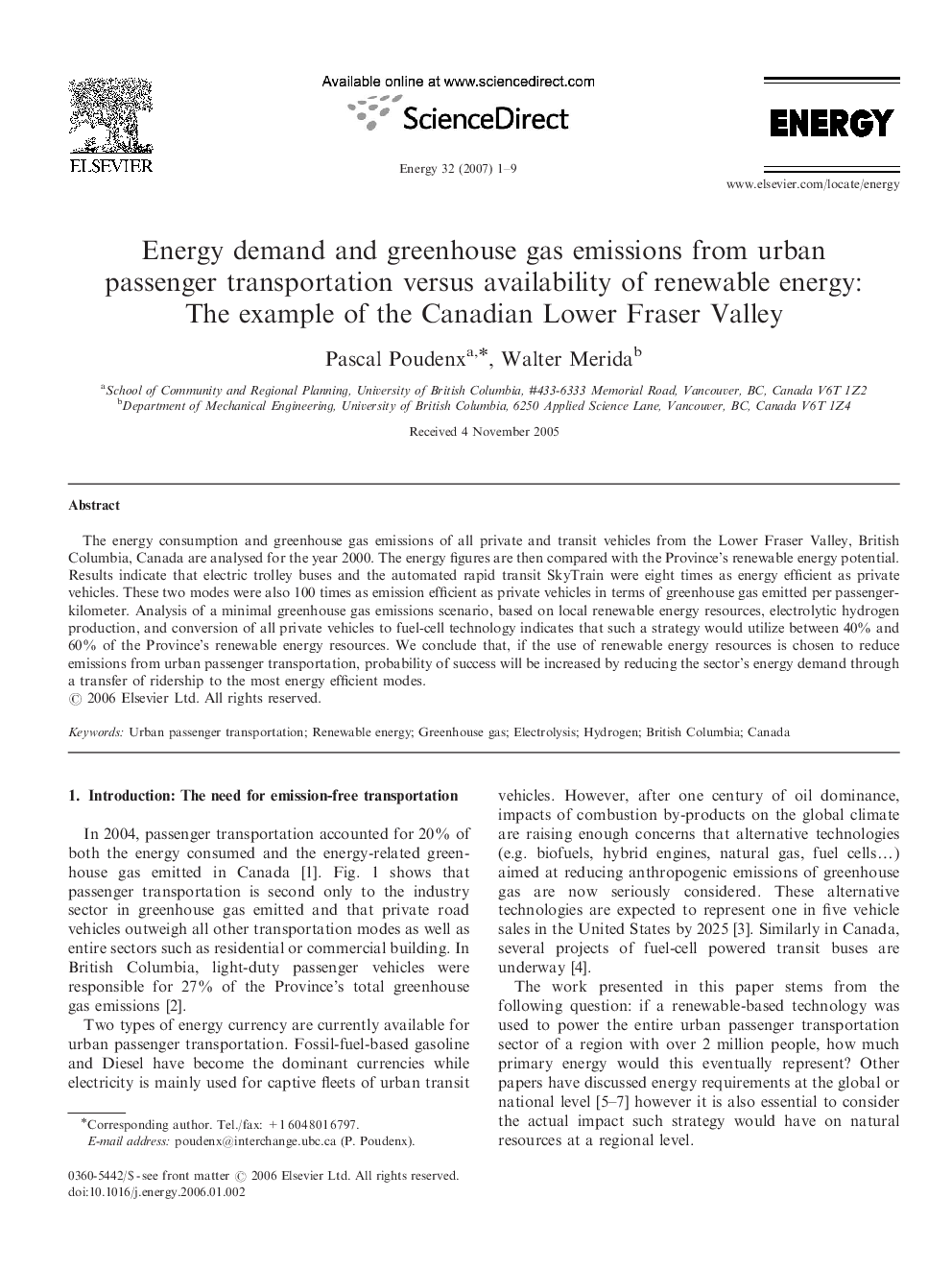| Article ID | Journal | Published Year | Pages | File Type |
|---|---|---|---|---|
| 1736216 | Energy | 2007 | 9 Pages |
The energy consumption and greenhouse gas emissions of all private and transit vehicles from the Lower Fraser Valley, British Columbia, Canada are analysed for the year 2000. The energy figures are then compared with the Province's renewable energy potential. Results indicate that electric trolley buses and the automated rapid transit SkyTrain were eight times as energy efficient as private vehicles. These two modes were also 100 times as emission efficient as private vehicles in terms of greenhouse gas emitted per passenger-kilometer. Analysis of a minimal greenhouse gas emissions scenario, based on local renewable energy resources, electrolytic hydrogen production, and conversion of all private vehicles to fuel-cell technology indicates that such a strategy would utilize between 40% and 60% of the Province's renewable energy resources. We conclude that, if the use of renewable energy resources is chosen to reduce emissions from urban passenger transportation, probability of success will be increased by reducing the sector's energy demand through a transfer of ridership to the most energy efficient modes.
